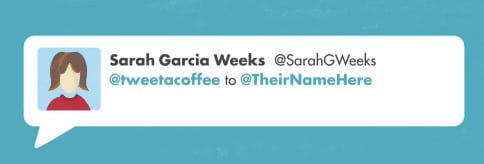
As social messaging matures and communicators get a better handle on aligning social platforms to their company’s financial goals, PR managers are increasingly adding a new wrinkle to their social media programs: E-commerce. Coca-Cola is the latest brand to toss its hat into the ring. In late July the company introduced its Tweet A Coke program, which invites Twitter users to send $5 Cokes to friends via the micromessaging service. Beverages sent via the Tweet A Coke program are redeemable at Regal Cinemas, which has partnered with Coca-Cola on the initiative. A social-commerce first for Coca-Cola, moviegoers can buy and Tweet a friend a Coca-Cola at participating Regal Cinemas across the country, according to Coca-Cola.
“Our intention is to use social platforms to both speak with people and create an easier purchase via a medium where they’re already spending time,” said Lauren Thompson, director of public affairs and communications at Coca-Cola, North America. She added that the company wants to “enhance its Share A Coke program by bringing new ways to engage with our consumers in the social space, beyond social publishing, response and paid media.”
PR observers said such programs are bound to proliferate throughout the marketplace.
“As it relates to social media monetization, this is the future,” said John Baird, VP of brand strategy and marketing and general manager of Waggener Edstrom’s New York office. “Increasingly, these are the methods we’ll use to communicate with, and make purchases from, the brands we love.”
Waggener Edstrom was an early adopter of eGifting via social media. During the 2012 SXSW conference the agency rolled out Tweet-a-Beer, which garnered 100-plus media placements and was tapped by Fast Company as the most buzzed-about topic at the festival.
Baird recommended three tips for PR pros to make sure that their eGifting efforts (or similar social media programs) add value to their customers:
• Listen to your customers. Social media enables a dialogue between brand and customer that was previously impossible. Your customers will tell you what they want.
• Be you. Fans check out your social channels because they have built a connection with the brand. Your social media voice must be true to that brand or your followers will leave.
• Stand out in the crowd. Be first. Among Facebook, Twitter, Instagram and Vine, social media innovates daily. Companies that want to maintain a dialogue with their followers know they have to be just as innovative, differentiating themselves and testing new ways to boost brand loyalty.
Other major brands have social media programs that are designed to enhance brand reputation, customer relations and, perhaps most important, fuel some form of commerce.
Last October, for example, Starbucks launched Tweet-a-coffee. The program, which expands on the company’s existing eGifting platform, enables people to send Starbucks Card eGifts to Twitter friends and followers.
“For us, it was about designing an ongoing, evergreen offering that allows customers to engage with one another online to gift a Starbucks beverage spontaneously and respond proactively with gestures of encouragement, support and to mark milestones,” said Linda Mills, director, retail brand PR at Starbucks.
While PR managers may be getting a better handle on how to communicate with stakeholders via social channels, they need to ramp up their efforts to drive action.
“The goal needs to be that every campaign inspires some type of action,” said Heidi Sullivan, senior VP of digital content at Cision, adding that a growing number of her clients are looking to add call to action prompts to their PR and marketing campaigns. “That could be to download an eBook or get a piece of content. When you see what’s working and what’s going viral, that’s when you throw fuel on the fire.”
It Don’t Mean a Thing if You Ain’t Got Ka-Ching

Mutual of Omaha’s “Wild Kingdom,” featuring Marlin Perkins and Jim Fowler, premiered in 1963, and the long-running TV show taught me everything I need to know about the evolution of social networks and how brands monetize their e-commerce sites.
“Wild Kingdom” exposed me to the truth that young male lions challenge older males for the right to mate with lionesses in the pride. Even more horrifying, the young challenger violently evicts the defeated male from his pride and kills the young cubs of the vanquished male to ensure his own bloodline.
Throughout the history of commerce, and retailing in particular dating back thousands of years, physical storefronts have ruled the pride of consumers. Not until the mid-1990s did a young challenger arrive in the form of e-commerce. Engaging fans, attracting others with shared interests and inciting purchases have become the modern-day fight for the pride among brands.
If bricks represent traditional retailing and clicks represent e-tailing, then consumer picks are “me-tailing.”
Me-tailing is the collaboration between brands and their fans to curate collections of relevant and interesting products for the millions of social users with share rational needs and emotional wants. An example is the social network WANELO, founded in 2011. Its name is short for “Want. Need. Love.”
WANELO describes itself as a digital mall. It offers users 350,000 stores and 14 million products from leading retail brands such as Abercrombie & Fitch, Forever 21, Perry Ellis, TOMS, Victoria’s Secret, Crate & Barrel and Pottery Barn. WANELO users create profiles by following favorite brands as well as other users’ favorite brands.
Brands monetize WANELO by helping consumers sift through the millions of products available online, curate the things they “want, need and love” and suggest these items to others with “like” profiles. A user can either “save” their favorites for another day or hit the “buy” button, which redirects the user to the brand’s e-commerce site for instant gratification. Think of it like this: WANELO is to retail shopping as Spotify is to music playlists.
Of course, WANELO is not the only me-tailer out there. Facebook ads and sponsored content also redirect users to e-commerce sites. My firm’s work for the 110-year-old Genuine Thermos Brand includes a robust paid and organic campaign, including Facebook promotional offers of free shipping when buying $45 or more in Thermos products at Thermos.com. Tracking the digital footprint left by shoppers on Thermos.com is but one way of monetizing a paid search and ad campaign on Facebook.
Facebook is more than Grumpy Cat, and YouTube offers viewers more than Charlie biting his brother’s finger. Retail brands are using social to move beyond “store finders” and “shopping lists” to collaborating with their fans to curate their favorite things and incite the “buy” among others with shared interests.
Doug Spong is the founder and president of Spong, a PR agency with offices in Minneapolis and New York. He can be reached at [email protected].
CONTACT:
John Baird, [email protected]; Heidi Sullivan, [email protected]; Lauren Thompson, [email protected].
This article originally appeared in the August 11, 2014 issue of PR News. Read more subscriber-only content by becoming a PR News subscriber today.
